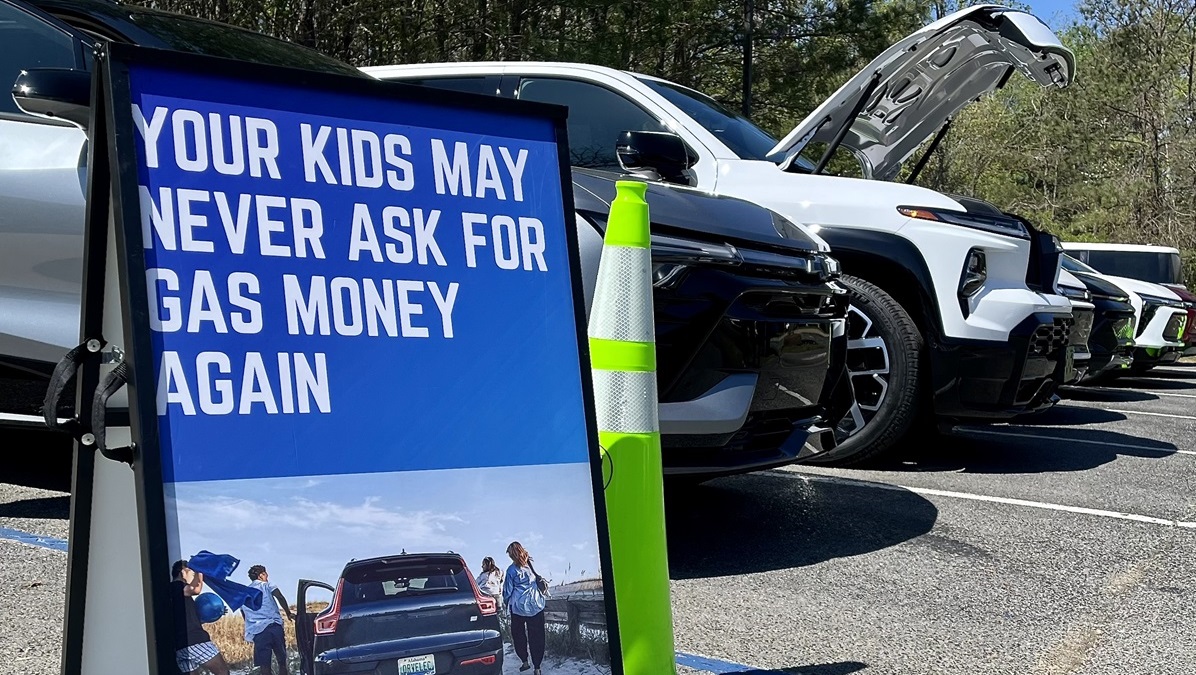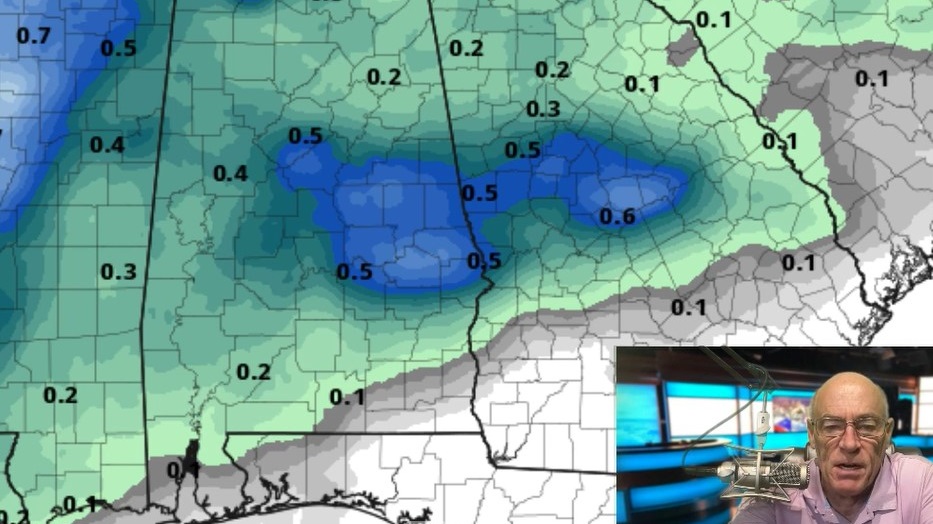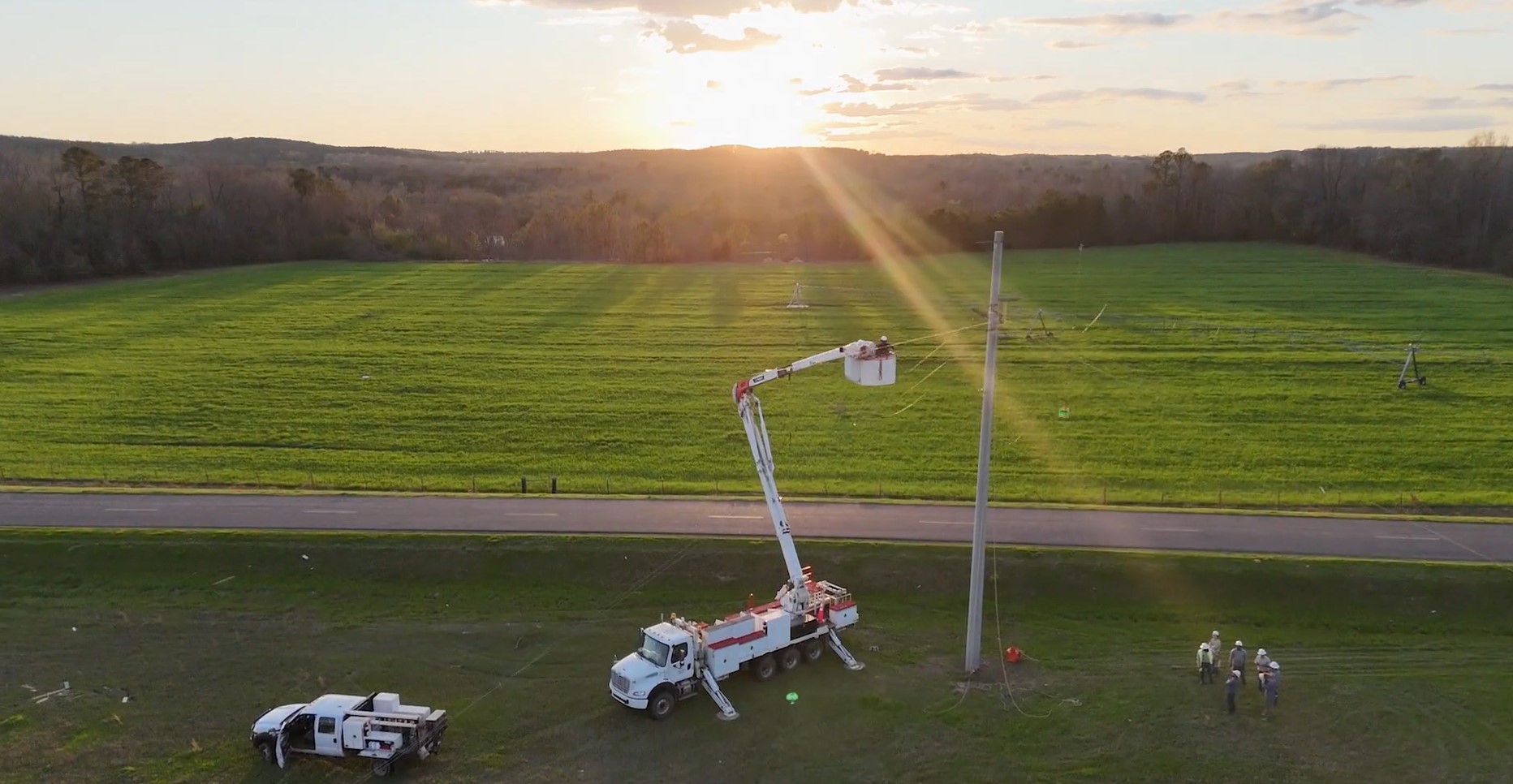Do the math: Years added up for 50-year veteran Alabama scientist Brenda Perkins
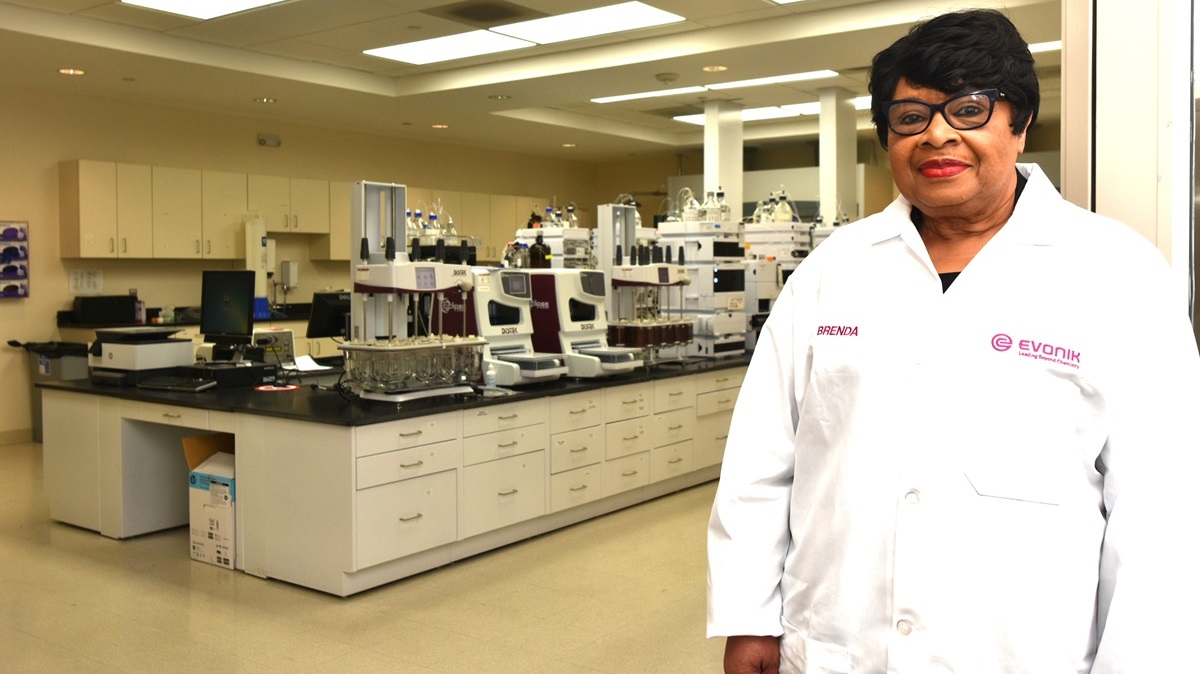
Brenda Perkins in the lab at Evonik in Birmingham. Perkins has been involved in the development of many innovative medical devices during her 50-year career as a scientist with Southern Research and then Evonik. (Solomon Crenshaw Jr. / Alabama News Center)
Brenda Perkins remembers being impressed by the movie “Hidden Figures,” which depicted the Black women who played an integral role in America’s pursuit of space exploration.
“I was amazed at what all they had accomplished and the math that was behind all the work that they had done and how they didn’t receive credit,” said Perkins, who works at Evonik Corporation’s Birmingham Laboratories. “I was just really happy to see that they were finally getting some credit for what they had done.”
Perkins recently celebrated 50 years of working in laboratories, at Evonik and before that at Birmingham’s Southern Research Institute. Looking back on her five decades working in science, the Pratt City resident said she was not a hidden figure.
“My mentor, John Gibson, was always so supportive and always outspoken to let everyone know that Brenda did all the math when it comes to trying to come up with all these different designs for these implants when I was at Southern Research,” she said. “Maybe the world doesn’t know that I worked as a scientist for many years. But I don’t think that I was a hidden figure per se. I’ve made a lot of contributions (and) my mentor John was very quick to express his appreciation and to let others know about my contributions.”
Thomas R. Tice is the senior director of global strategic and technical marketing health care at Evonik. He said it’s not overstated to speak of Perkins – Miss Brenda to many – and her colleagues as pioneers.
“Absolutely not,” said Tice, who led the Southern Research department that would become Evonik Birmingham Laboratories. “We put the very first long-acting injectable on the market for prostate cancer for one of the companies that we were working with. Then we were making the polymers that we make here, these plastics, resorbable plastics, before it was even commercially available. Now they’re used in over 73 long-acting injectable products on the market, and they’re also used in medical devices.”
“We’re using these polymers for 3D printing, like 3D printing of orthopedic parts, things of that sort,” he continued. “All that started in the 1970s. In fact, we even had the first control release meeting ever here in Birmingham. There’s a lot of pioneering work that was done that we were involved in, in the ’70s.”
Miss Brenda could have been one of the women portrayed in the movie “Hidden Figures.” Like them, she had a deep love for and appreciation of math.
“I was very good at math from high school,” she said. “I was really inspired by my high school teacher, David Moore. He really was good at involving all the students. He would ask questions and expect for you to give answers. That made me study even harder so I would have the correct answer.
“But I was always good at math.”
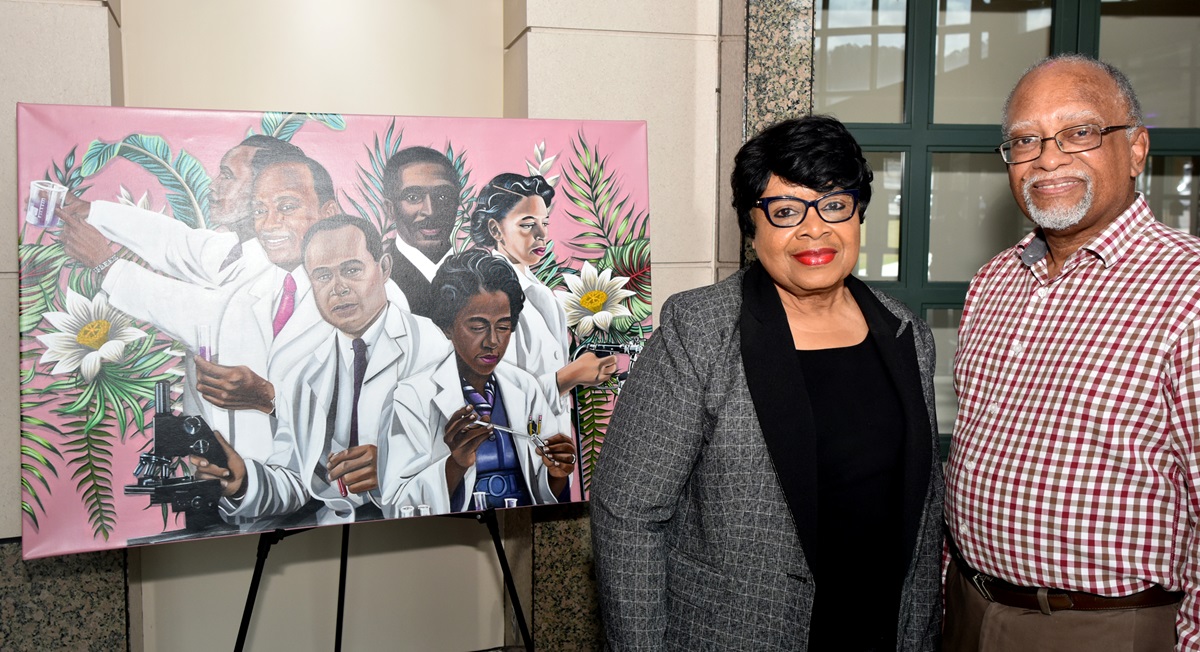
Brenda Perkins with longtime Evonik colleague Darryl Love. Also pictured is a painting by Kenneth Scott Jr., which pays tribute to Black scientists. (Solomon Crenshaw Jr. / Alabama News Center)
The Uniontown High School product was valedictorian of her class, earning a four-year scholarship to Alabama State University. And, inspired by her high school math teacher, she started on a path toward being a teacher.
But her student teaching experience set her on a detour.
“Student teaching wasn’t really … it was a lot of work,” she said. “I was overwhelmed with all the homework assignments that you had, the paper-grading and that sort of thing. I just really had a bad experience there and decided that maybe teaching wasn’t really what I wanted to do.”
The ASU grad sought a job at Southern Research. Because she majored in math with a minor in chemistry, she was hired as a research chemical technician, not as a scientist.
“I accepted that role because I could still see some potential there,” she said.
Perkins found – or created – a niche while working on a fluoride-releasing device.
“I used my mathematics skills and abilities along with some equations to come up with a design to make that device release fluoride in a certain manner over a certain period of time,” she said. “I think that was the first time I really got interested in the controlled release part of what we were doing, as far as manufacturing implants and devices. We had more implant work come in, and I used my mathematics skills again to come up with ways to design and make the type of implants that we needed to give us the rate of release that we needed.
“After seeing that I could incorporate the math skills that I had, they created another position called the biomathematician,” Perkins said. “That allowed me to move up from a chemical technician to a biomathematician.”
Perkins added to her knowledge as she learned about polymers used to make devices.
“I was able to manufacture the devices, design them and make them at the same time to come up with the type of release that we needed to get, the duration that we needed in controlled release,” she said. “That saved the patient from having to come in often to get the same medication. Instead of getting the dose every week, you can prolong the length of time that the dose lasts.”
Today, Perkins is a senior research and development scientist at Evonik. She is a strong advocate for science education as well as diversity and inclusion in STEM fields.
“Southern Research had other departments, but in the department that I worked in, I was the first Black female that was hired in that department, as far as working in the capacity of manufacturing any type of device or testing any type of device,” she said. “I was just out of college, and I found the work to be fascinating and something that I enjoyed doing.”
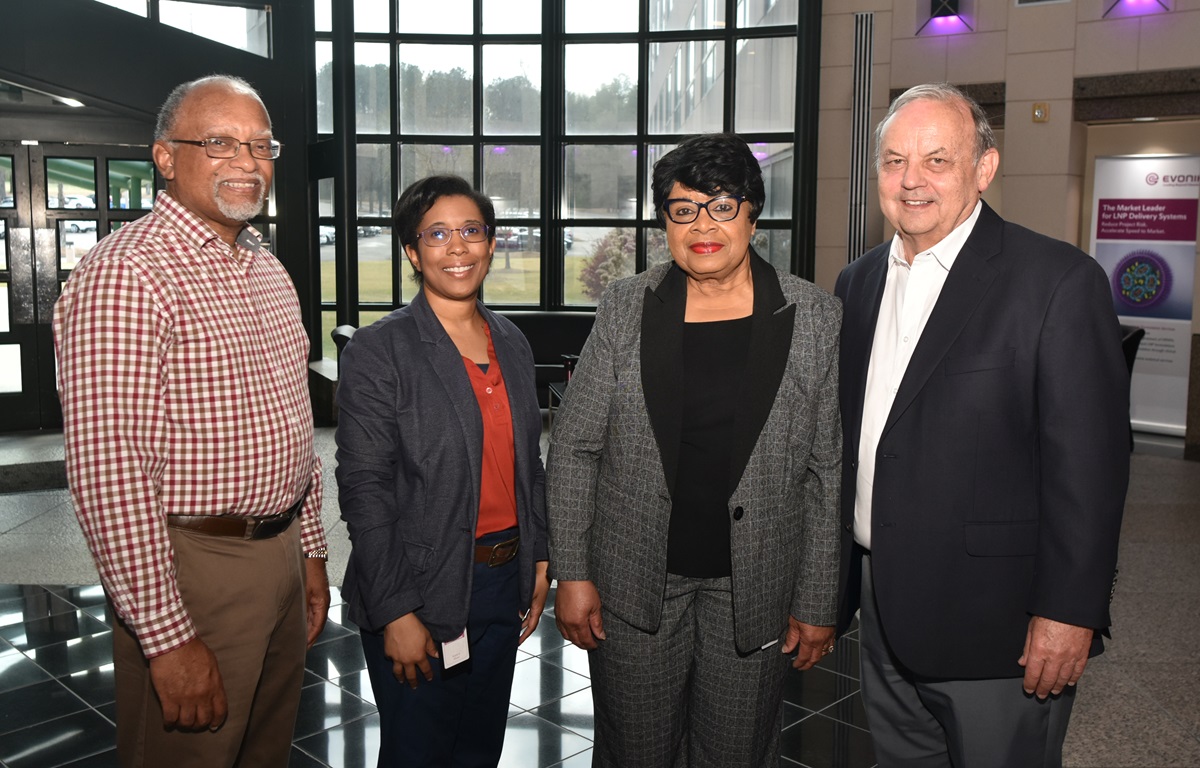
From left, retired scientist Darryl Love; Katara Shaw, director of Research, Development and Innovation; Brenda Perkins, senior research and development scientist; and Thomas Tice, senior director of Global Strategic and Technology Marketing, at Evonik’s Birmingham laboratories. (Solomon Crenshaw Jr. / Alabama News Center)
Darryl Love started at Southern Research about seven months after Perkins and, like her, made his way over to Evonik. He was featured in a 2023 painting by Kenneth Scott Jr. called “Black Resilience – Innovation in the Midst of Resistance,” in which he was depicted in the company of other distinguished Black scientists.
When he retired in June 2023 after 47½ years, Love worked in research, development and innovation, dealing with product development.
“They make it,” Perkins said, “and we test it.”
Katara Shaw is the director of RD&I and has worked at Evonik for 19 years. She says she is standing on the shoulders of those who came before her, like Perkins and Love.
“It’s the people like the Darryls and the Brendas that paved the way for me,” she said. “I don’t think I would have had my opportunities had it not been for them and the exemplary work that they did at laying the foundation before me, and even those before them.
“But then they took it to the next degree,” Shaw continued. “For me, it’s like, ‘Pay it forward.’ Now I have my opportunity to do that for others as well. But looking at these guys – these are my examples.”



